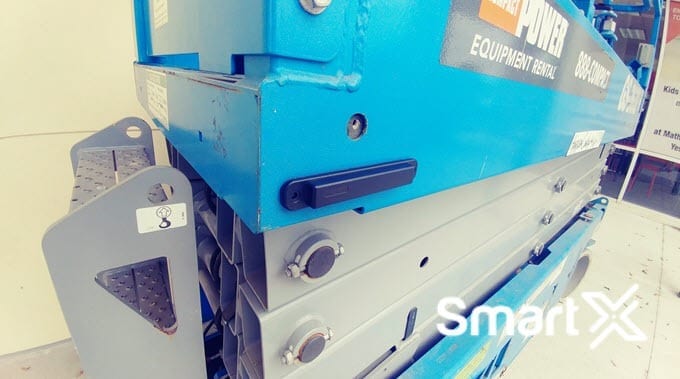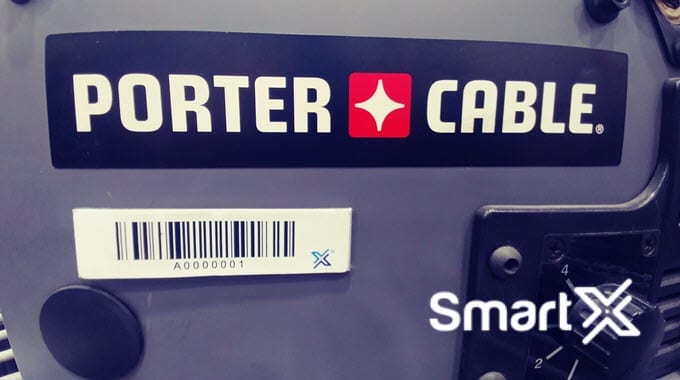Cosmetic Care: Smart Monitoring Solutions for L’Oréal’s Warehouse Excellence
L’Oréal’s Warehouse Temperature Monitoring Success. L’Oréal Brazil, a leading cosmetic company renowned for its innovation and commitment to delivering high-quality
Track asset performance, execute maintenance and service, and maximize uptime with advanced technologies.
Deliver as promised with risk-resilient, reliable, and sustainable logistics operations.
A revolutionary convergence of personal and process safety that improve efficiency, safety and reliability.

The optimal mounting method will depend upon where a tag will be secured, the environmental conditions it will be exposed to, and the composition of the surface on which the tag will be placed.
Options include:
• Cable ties – Attach easily and provide tamper evidence when used as a closure for bags or containers
• Embedding – Tags may be sealed within an item’s material components or secured in a cavity
• Glues – A variety of industrial adhesives are available to bind virtually any materials and hold securely under a wide range of environmental conditions
• Screws, rivets, or nails – Many tags include pre-drilled holes to help make this method swift and secure
• Welding – Some tags feature mounts that can be securely welded to metal cylinders, containers, tools, or machinery
With thousands of RFID tag configurations to choose from and new ones introduced almost daily, how do you sort through the sea of passive transponders to find cost-effective tags that will deliver optimal performance for your application? Here are six items to consider when choosing the correct RFID tag for any task.
Some tags will only have a few feasible attachment methods, while others can use almost any attachment method available. If a given tag meets all other application requirements (i.e., read range, memory, size, etc.), check the recommended attachment methods for that specific tag on the tag’s data sheet or by asking the manufacturer.
The asset’s surface material is critical in choosing an attachment method because some attachment methods will work better on certain types of materials. For example, adhesives and welding are two attachment methods better suited for metal assets than textiles or linens. The asset’s surface material, whether metal, wood, plastic, or cotton, should be considered to narrow down the available attachment options.
Of note, when using adhesive and before attaching a tag to an item, always clean the intended tagging area so that the tag has the best chance of staying securely attached for the application’s lifespan.
If the tag is exposed to any harsh environmental concerns such as UV light, moisture, vibration, pressure, chemicals, or impact, its attachment method will also be exposed. If one of these concerns applies to your application, it is best to choose an attachment method that has been tested and proven to withstand such exposure.
Extreme temperatures are essential to consider when choosing a tag and attachment method. Not only could the tag be damaged and become unreadable, but the actual attachment method could melt off the item (e.g., adhesive) or become brittle and break (e.g., cable tie), causing the tag to fall off the item. Be sure the attachment method has been tested in application temperature conditions before making a final selection.
In addition to the environment, the item's temperature should also be assessed when choosing the attachment method. If the environment is an average, regulated temperature, but the actual item can reach much higher or lower temperatures, consider the more extreme temperature when choosing how to attach the RFID tag.
Depending on their chemical makeup, specific attachment methods can slowly degrade over time. In applications with long lifespans, such as returnable transit assets (e.g., reusable pallets), the tag may need to stay on the asset for years. Evaluate the tag and attachment method to ensure they are compatible with the intended lifespan of the asset in the application.
Tamper Resistant describes a process or device that is designed to resist access to the product. For example, Tamper Resistant packaging can be shrink-wrapped on fresh food or beverages that have been sealed. Tamper Resistant packaging varies in levels, depending on the company and type of product, but can also be standardized.
Tags with large memory capacities enable more detailed records. Still, low memory tags are sufficient for some tasks when used with an online database that holds the additional data.
UHF tags mostly use a standardized 96-bit EPC code, the electronic counterpart of an industrial barcode.
However, technological advancements are packing more significant amounts of data in ever-shrinking integrated chips.
Larger memory tags enable tracking systems to employ more secure coding and encryption techniques to ensure greater data accuracy and veracity.
High memory tags – up to 64 kilobytes and read-write capability – are redefining RFID potential.
A single tag can securely store detailed maintenance records for a piece of industrial equipment or fleet vehicle. Complete records of production process steps stored in a high-memory tag can provide instant status information even in offline scenarios when no real-time database access is possible.
For many RFID users, increasing tag memory capacity has significantly expanded logistics tracking and reporting capabilities.

While using RFID tags to maintain a database of your assets, tools, and equipment can deliver a more durable option than barcoding, its main advantages are automation and speed. Using an RFID tracking method helps automate the assets and equipment check-in and check-out process and can reduce the number of personnel you have dedicated to keeping track of inventory.
Also, an advanced RFID tracking application, such as SmartX HUB, gives you a flexible self-service asset check-out that can improve worksite efficiency and give you a one-stop shop for your inventory needs.
RFID Asset tracking is becoming increasingly popular as RFID tag prices drop and reliability increases. The tags have several advantages over bar codes when it comes to asset tracking:
-RFID tags do not need a line of sight to be placed inside tools or assets.
-Multiple RFID tags can be read at the same time to speed processing
-The tags are rugged and generally last longer than bar code labels, making them perfect for construction inventory management
However, we also believe that there is a need for both RFID tags and bar code labels, as there are some disadvantages to RFID asset tracking:
-RFID tags are often more expensive than bar code labels, so they’re not always practical for inexpensive items
-They are challenging to read through metal and in liquid environments without unique tags
We offer the best of both worlds. SmartX HUB’s asset tracking system provides mobile computers that offer RFID capability and can also read bar codes for ultimate flexibility.
SmartX HUB Solution based on RFID Tags helps you obtain a more efficient workflow by improving your control over your project, enhancing safety on your Jobsite, reducing equipment downtime, minimizing safety hazards, increasing equipment life expectancy, and reducing repair costs. It provides you with the necessary means to stay on schedule, stay on budget and work consistently to keep your overall project on the right track.
Leading manufacturers can customize a tag to fit your unique requirements for chip type, dimensions, programming, and materials. Mixing and matching standard components to create a custom tag can be cost-effective while optimizing the potential of your logistics application.
To get more information on how we can help you overcome the challenges to your business or to check out a free demo, contact us.
Contact us at the SmartX office nearest to you or submit a business inquiry online.
Let us know how we can help you solve your business challenges!
L’Oréal’s Warehouse Temperature Monitoring Success. L’Oréal Brazil, a leading cosmetic company renowned for its innovation and commitment to delivering high-quality
5 Tips for Maximizing Oil & Gas Asset Utilization With RFID Effective asset utilization holds immense significance in the oil
Manufacturing Automation Optimized With RFID RFID tags facilitate the seamless transmission of data alongside a product, enriching the information as
Organizations large and small and across industries can leverage RTLS to improve safety, safeguard materials and work more efficiently.
Discover how your peers are benefiting from real-time visibility.